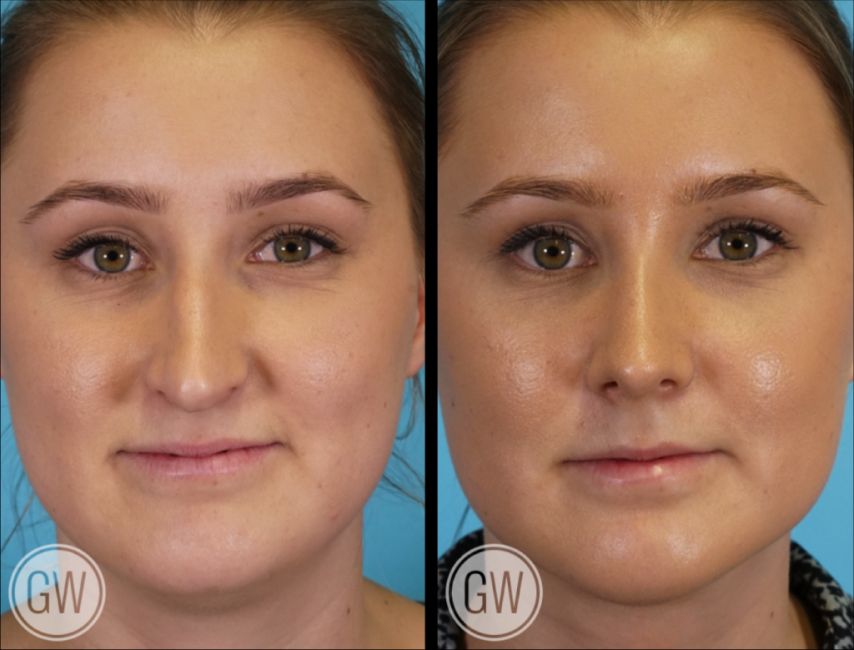
13 Sep Recovery After Septoplasty With Rhinoplasty
For patients with both functional nasal obstruction and aesthetic concerns, combining septoplasty with rhinoplasty provides a comprehensive surgical approach. This dual procedure is often recommended when a deviated septum impairs airflow and coexists with structural features that the patient wishes to adjust, such as nasal asymmetry, dorsal prominence, or tip projection.
Septoplasty focuses on correcting septal deviation by realigning cartilage and bone to improve nasal airflow and internal function. When performed in conjunction with rhinoplasty, additional refinement may involve dorsal reduction, nasal tip support, or bone repositioning to modify facial balance. Addressing both internal and external components in a single operation allows for a coordinated result while reducing overall anaesthetic exposure and recovery time.
Dr Guy Watts, a Specialist Plastic & Reconstructive Surgeon based in Perth, Western Australia, tailors this combined procedure to each patient through a detailed clinical and anatomical assessment. His approach prioritises structural integrity, functional improvement, and aesthetic proportionality, all within a framework of evidence-based surgical planning.
Understanding the recovery process is crucial. Healing after septoplasty with rhinoplasty involves the resolution of internal swelling, tissue remodelling, and gradual changes to nasal contour. Familiarity with each stage of recovery supports realistic expectations and enables patients to actively participate in their post-operative care.
Take our quiz, and find out if you are ready for surgery
Why Combine Septoplasty With Rhinoplasty?
Septoplasty is a surgical procedure that corrects a deviated septum, which is the thin wall of cartilage and bone separating the nostrils. When misaligned, this structure can significantly impair airflow through one or both sides of the nose, leading to chronic congestion, sinus problems, or breathing difficulty during exercise or sleep.
Rhinoplasty, on the other hand, reshapes or refines the nasal structures. This may involve subtle changes to the nasal bridge, tip, or nostrils and may be performed for aesthetic purposes, functional improvement, or both.
Combining septoplasty and rhinoplasty allows the functional and cosmetic components of nasal surgery to be addressed during a single operation. Patients may benefit from a coordinated healing process and avoid the need for two separate recovery periods. Dr Watts performs this combined surgery in cases where both airflow and structural balance are of concern, tailoring each approach to suit individual anatomy and surgical goals.
What To Expect Immediately After Surgery
After surgery, patients are monitored in a recovery area before being discharged on the same day. In the first 24 to 48 hours, it is common to experience swelling around the nose and eyes, along with mild to moderate discomfort and facial tightness. Some bruising may develop under the eyes and around the midface.
Nasal congestion is to be expected, particularly when internal splints or packing are used to support the septum. Breathing through the nose may be restricted during this time, and a feeling of pressure is common. Dr Watts may apply an external nasal splint to stabilise the shape of the nose during the early phase of healing. Mild drainage or oozing from the nostrils can occur and is usually managed with light dressings or a nasal drip pad.
Patients are encouraged to rest with their head elevated and avoid unnecessary movement or exertion. Prescribed medications help manage discomfort, and detailed post-operative instructions are provided to support care at home.
The First Week: Rest, Swelling, And Support
The first week is considered the most intensive phase of recovery. Swelling typically peaks around the second or third day and then gradually begins to settle. Bruising beneath the eyes may darken before fading. The sensation of nasal blockage remains prominent during this time and often improves once internal swelling decreases or splints are removed.
Cold compresses, used intermittently, may provide temporary relief from swelling. Saline sprays can assist with nasal hygiene, helping to prevent crusting and support internal healing. It is important not to blow the nose or bend forward, as these actions can increase pressure and disrupt healing tissues.
Dr Watts reviews each patient during the first week to assess the healing process and determine whether any splints or dressings need to be adjusted or removed. This early post-operative check-up is also an opportunity to address any concerns and reinforce ongoing recovery care.
DOWNLOAD DR WATTS’ GUIDE TO RHINOPLASTY SURGERY
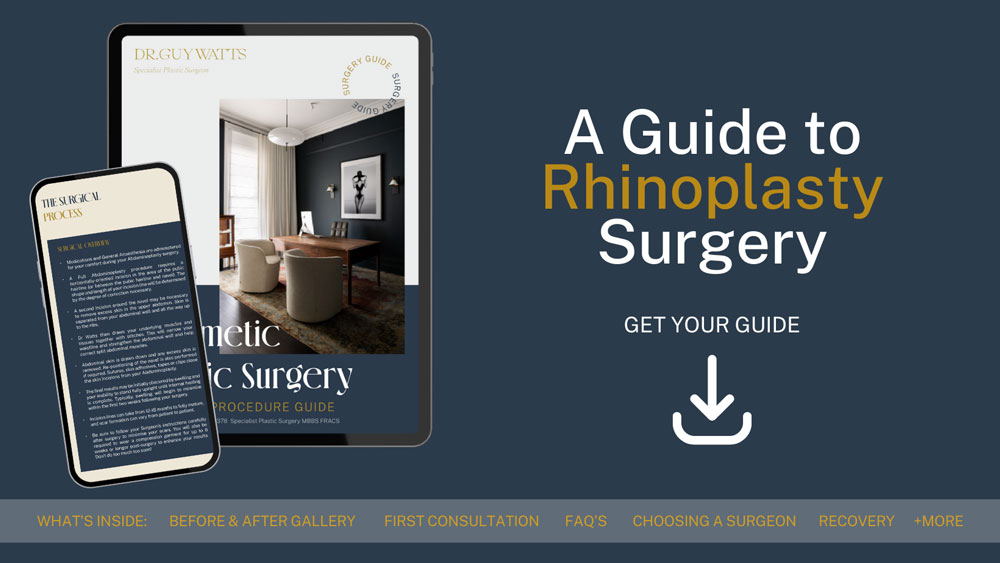
Weeks 2 To 4: Gradual Improvements
By the second week, most patients notice a reduction in swelling and bruising. External splints are generally removed within 7 to 10 days, while internal splints, if used, may remain in place a little longer depending on the surgical plan. As the nose begins to settle, breathing becomes more comfortable and nasal function gradually improves.
During this time, patients may feel ready to return to work or daily responsibilities. Many individuals resume non-strenuous activities around 10 to 14 days after surgery, although this varies depending on the demands of the workplace or home environment.
Numbness or tingling around the nasal tip and upper lip may persist and usually resolves over several weeks. Although the external appearance of the nose becomes less swollen during this phase, it is important to understand that the final result is still evolving.
Long-Term Healing: What Happens In Months 1 To 12?
Recovery following septoplasty with rhinoplasty continues well beyond the initial few weeks. While the majority of swelling resolves within the first three months, some areas of the nose, especially the tip, may take up to a year or longer to fully refine. The final result is typically assessed around 9 to 12 months after surgery.
Internal healing also takes time. Cartilage and soft tissues settle gradually, and minor asymmetries or stiffness may be experienced during this period. Nerve regeneration and tissue remodeling contribute to changes in sensation and contour over time.
Scarring, both external and internal, softens with consistent care and appropriate sun protection. Follow-up appointments with Dr Watts in Perth remain important throughout this phase to monitor healing and ensure all questions are addressed.
Bodylift Surgery Before and After Photos
Photo disclaimer:
Each surgical procedure produces unique outcomes influenced by factors such as body composition, skin tone, laxity, age, and genetics. The before-and-after photographs displayed are of actual patients and are provided for informational purposes only.
What Can Affect Recovery?
Several factors influence the way each person recovers. Individual differences in tissue response, the extent of surgical correction, and adherence to post-operative care all contribute to the overall experience.
Some patients may experience more prominent swelling or bruising due to genetic or lifestyle factors. Others may recover more quickly, particularly when the surgery is less complex or when nasal structures are already well aligned. Underlying sinus issues or a history of nasal trauma can affect both the surgical approach and the healing timeline.
Maintaining a healthy lifestyle, avoiding smoking, and closely following aftercare instructions can help support a smoother recovery. Dr Watts provides tailored guidance and ongoing monitoring to ensure recovery stays on track.
Care Instructions To Support Optimal Healing
Following specific post-operative instructions is essential. Patients are encouraged to sleep with their head elevated, use saline sprays as directed, and attend all scheduled follow-up appointments. Resting for the first week, maintaining hydration, and eating soft foods can support recovery and reduce strain on healing tissues.
It is important not to blow the nose or engage in strenuous activity for several weeks. Wearing glasses that rest on the nasal bridge should be avoided unless otherwise approved. Direct sun exposure and contact sports are not recommended during the initial recovery period. Swimming and submerging the face should also be postponed until cleared by Dr Watts.
These practical considerations help protect the surgical site and allow tissues to heal properly over time.
Emotional And Psychological Recovery
The emotional aspects of recovery are just as important as the physical. In the early stages, temporary swelling or asymmetry may affect a patient’s perception of their appearance. Some individuals may experience frustration, disappointment, or post-operative ‘blues’. These feelings are common and usually improve as swelling subsides and the final result begins to take shape.
Dr Watts encourages his patients to approach the recovery period with patience and self-compassion. Setting realistic expectations and maintaining open communication may reduce anxiety and help individuals feel supported throughout the healing process.
Local Insights: Recovery Support In Perth, WA
Recovering close to home offers significant benefits. Perth-based patients of Dr Watts have easy access to post-operative reviews and timely support. This ensures any questions or concerns can be addressed promptly, without the need for extensive travel or delays in care.
Having surgery and follow-up in Perth also means patients can recover in a familiar environment, surrounded by friends or family. Access to local pharmacies and general practitioners can further assist recovery when required.
Patients across Western Australia often appreciate the continuity of care that comes with seeing a local Specialist Plastic & Reconstructive Surgeon like Dr Guy Watts, whose Perth clinic is equipped to support every stage of recovery.
FAQs About Recovery After Septoplasty With Rhinoplasty
Ready To Take The Next Step?
If you’re considering septoplasty with rhinoplasty and would like personalised guidance, arranging a consultation with Dr Guy Watts, Specialist Plastic & Reconstructive Surgeon in Perth, is an important first step. During this appointment, your goals can be discussed in detail, surgical options explored, and a tailored recovery plan developed to support informed decision-making and long-term outcomes.
Further Reading
- Read more about Dr Guy Watts’ Blog on Top 5 ways to Alter Your Nose
- Read more about Dr Guy Watts’ Blog on How to Reduce Bruising after Rhinoplasty
- Read more about Dr Guy Watts’ Blog on Recovery after Nose Surgery
About Dr. Guy Watts – MED0001539378
FRACS (Plas) – Specialist Plastic Surgeon In Perth WA
Dr. Guy Watts is a Specialist Plastic Surgeon (AHPRA MED0001539378) with an extensive career that spans across renowned plastic surgery clinics worldwide. His experience has been honed through invaluable experiences at esteemed establishments such as the New York Eye and Ear Infirmary and the renowned Pitanguy Clinic in Brazil.
Having collaborated with the foremost cosmetic plastic surgeons on a global scale, Dr. Watts has chosen to return to Perth after a 17-year journey of intensive training and invaluable professional experience to bring the latest practices and technology in cosmetic plastic surgery to his patients.
Dr. Watts is a Fellow of the Royal Australasian College of Surgeons (FRACS) and a Member of the Australian Society of Plastic Surgeons (ASPS), Australasian Society of Aesthetic Plastic Surgeons (ASAPS) and the International Society of Aesthetic Plastic Surgeons (ISAPS).
Read about the potential Risks and Complications of Surgery
Read the Patient Information and Resources
About CLINISPA
Clinispa is Dr Watts’ bespoke medical clinic performing Cosmetic Aesthetic treatments. At Clinispa, we offer advanced clinical treatments in a luxurious and calming environment, tailored to support your skin’s health and appearance.
Clinispa aesthetic services are performed by Dr Guy Watts’ nursing professionals, who have a passion for and solid understanding of facial aesthetics.
All Clinispa clients are considered individually, with a personalised treatment plan consisting of advanced scientific approaches to cosmetic aesthetics. We incorporate innovative technologies in conjunction with superiorly formulated skin care.
For more information about the full range of Clinispa Aesthetic of Cosmetic Treatments visit the Clinispa website







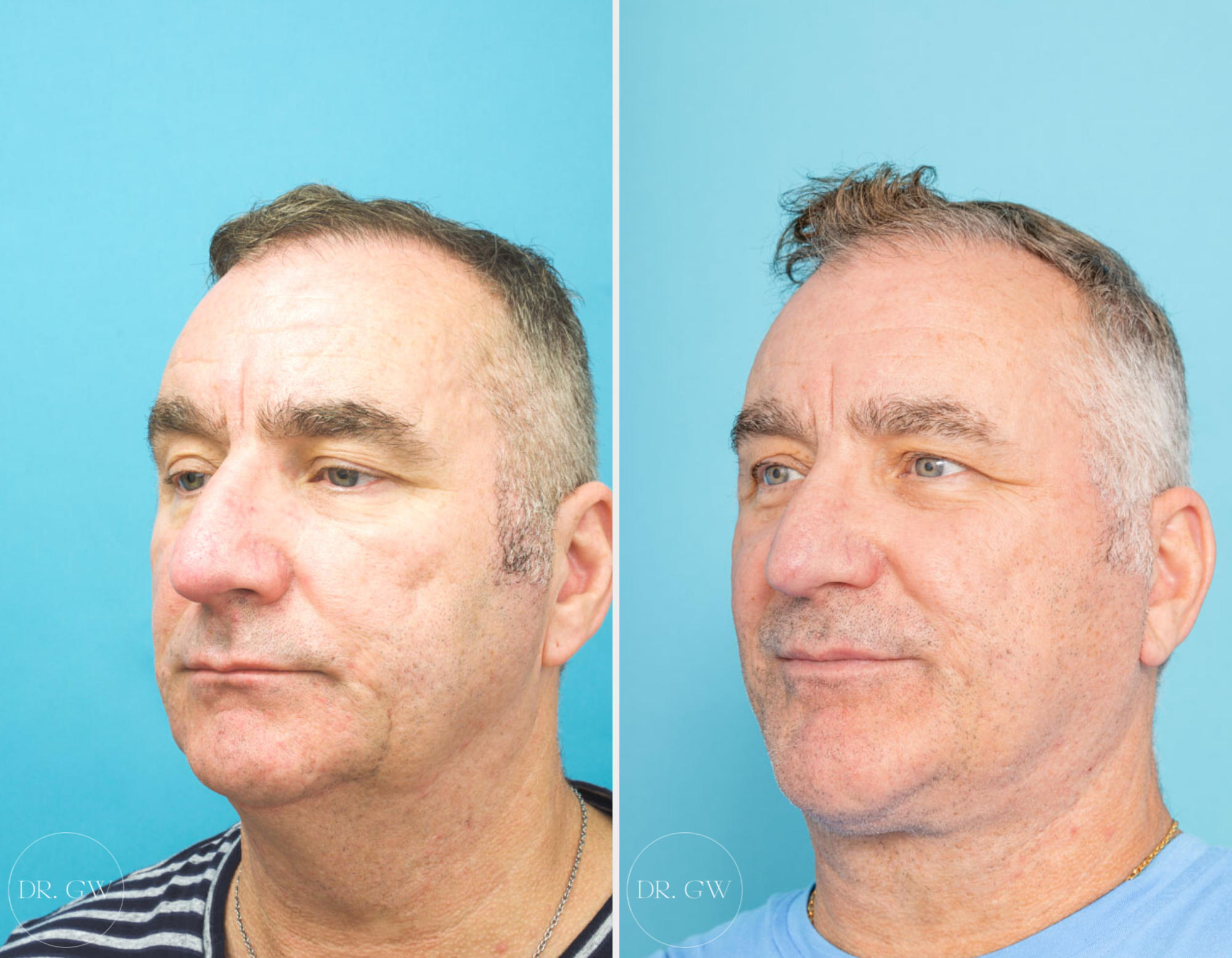
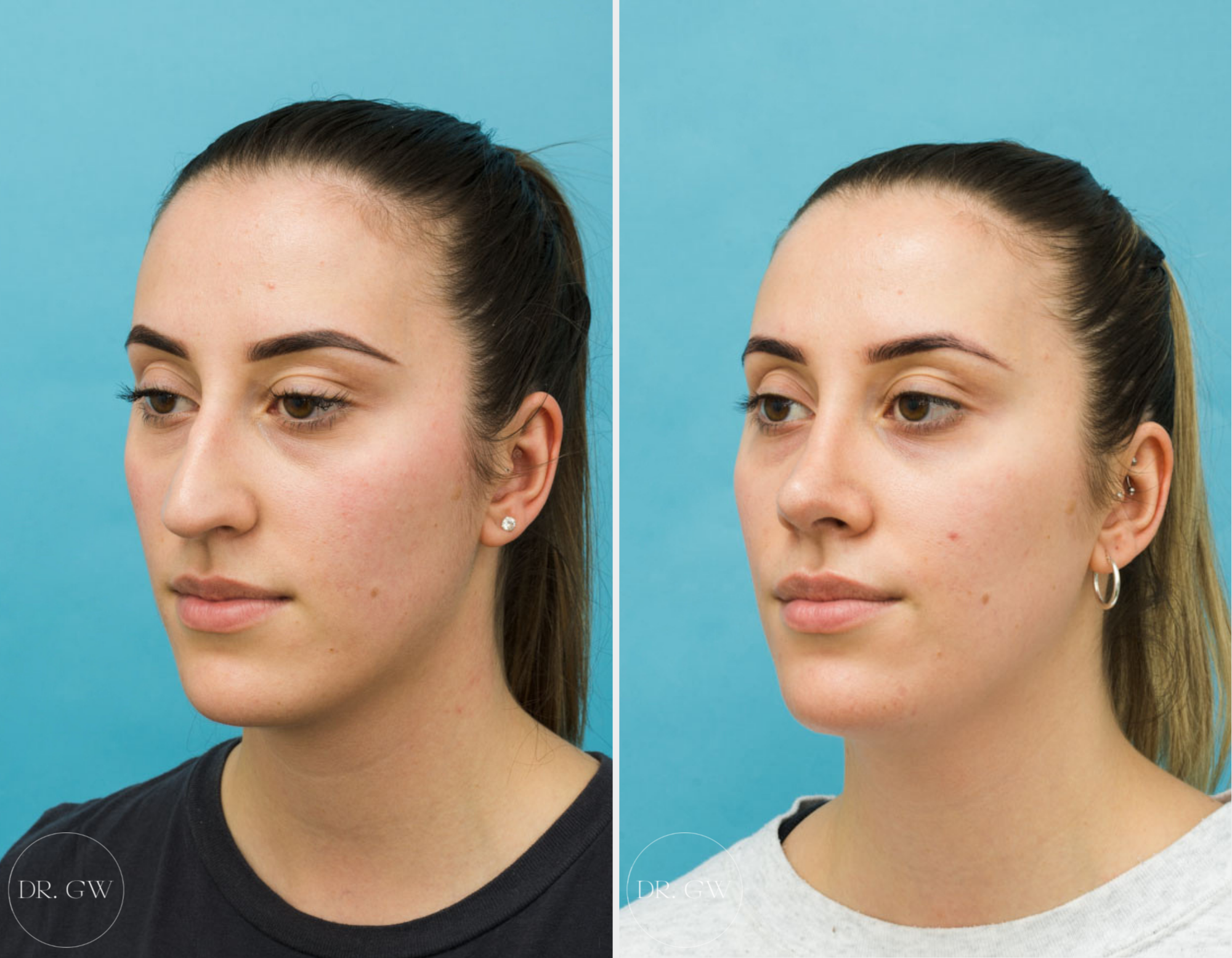
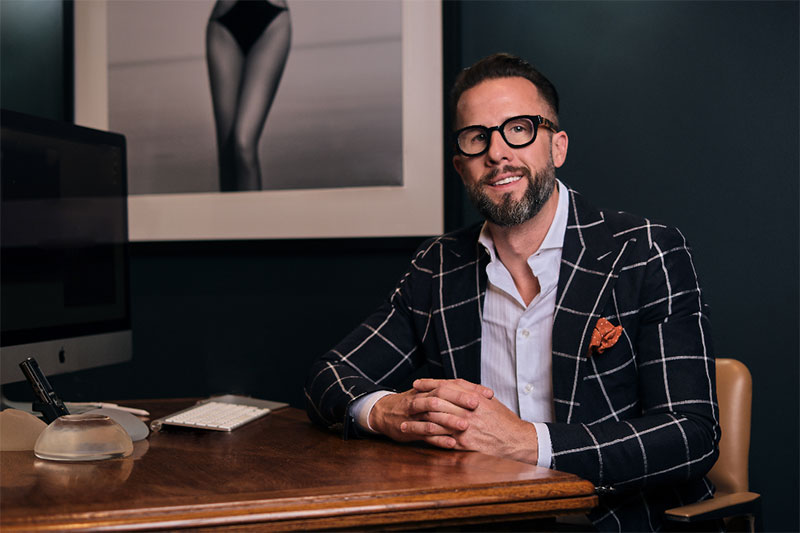
Sorry, the comment form is closed at this time.